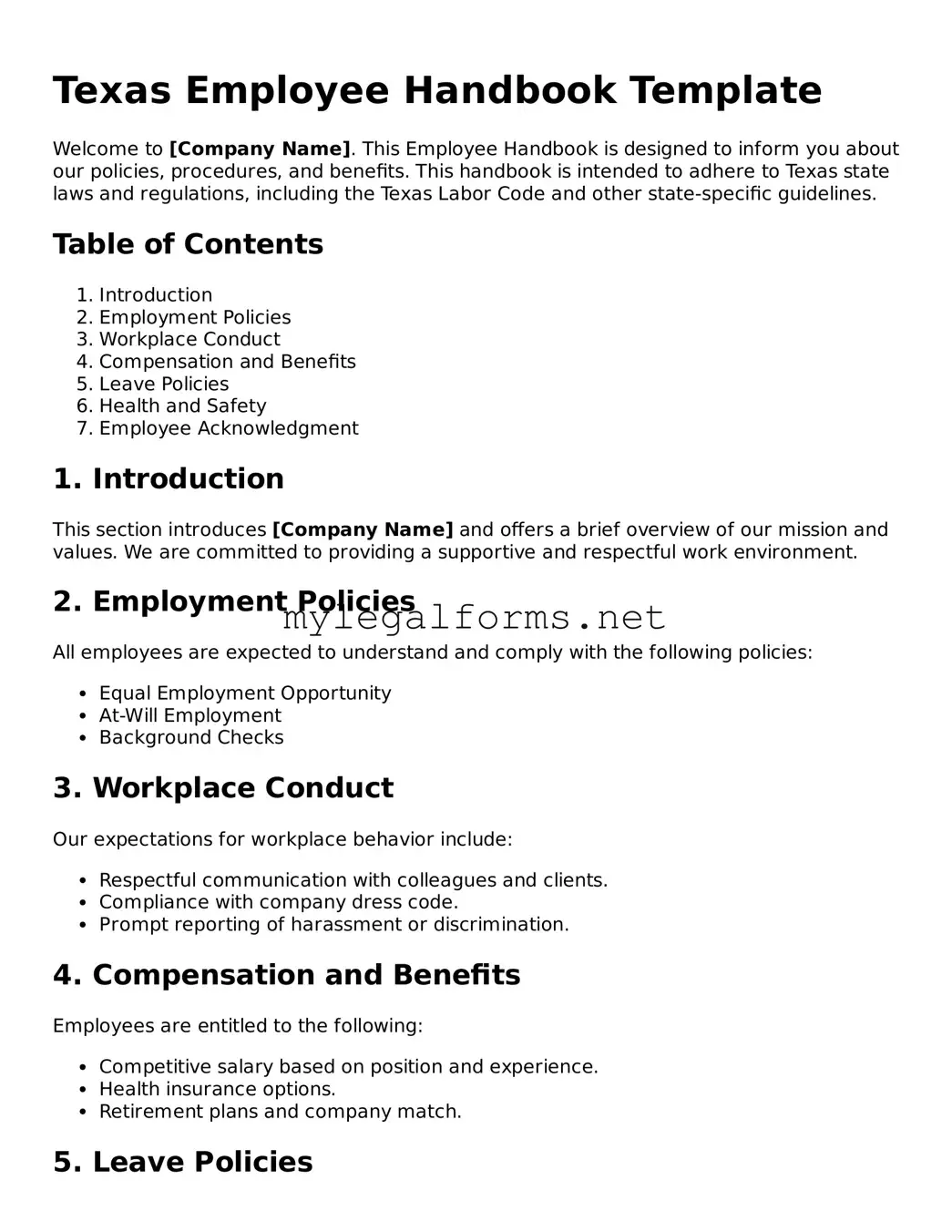Texas Employee Handbook Template
Welcome to [Company Name]. This Employee Handbook is designed to inform you about our policies, procedures, and benefits. This handbook is intended to adhere to Texas state laws and regulations, including the Texas Labor Code and other state-specific guidelines.
Table of Contents
- Introduction
- Employment Policies
- Workplace Conduct
- Compensation and Benefits
- Leave Policies
- Health and Safety
- Employee Acknowledgment
1. Introduction
This section introduces [Company Name] and offers a brief overview of our mission and values. We are committed to providing a supportive and respectful work environment.
2. Employment Policies
All employees are expected to understand and comply with the following policies:
- Equal Employment Opportunity
- At-Will Employment
- Background Checks
3. Workplace Conduct
Our expectations for workplace behavior include:
- Respectful communication with colleagues and clients.
- Compliance with company dress code.
- Prompt reporting of harassment or discrimination.
4. Compensation and Benefits
Employees are entitled to the following:
- Competitive salary based on position and experience.
- Health insurance options.
- Retirement plans and company match.
5. Leave Policies
Our leave policies include:
- Annual leave
- Sick leave
- Family and medical leave in accordance with federal and state law.
6. Health and Safety
Your health and safety at work are crucial. We comply with OSHA regulations, and employees are encouraged to report any unsafe conditions immediately.
7. Employee Acknowledgment
All employees must sign the acknowledgment form indicating that they have received, read, and understood the policies contained in this handbook.
This handbook serves as a guide. For specific questions or concerns, please contact [HR Contact Name] at [HR Contact Information].
